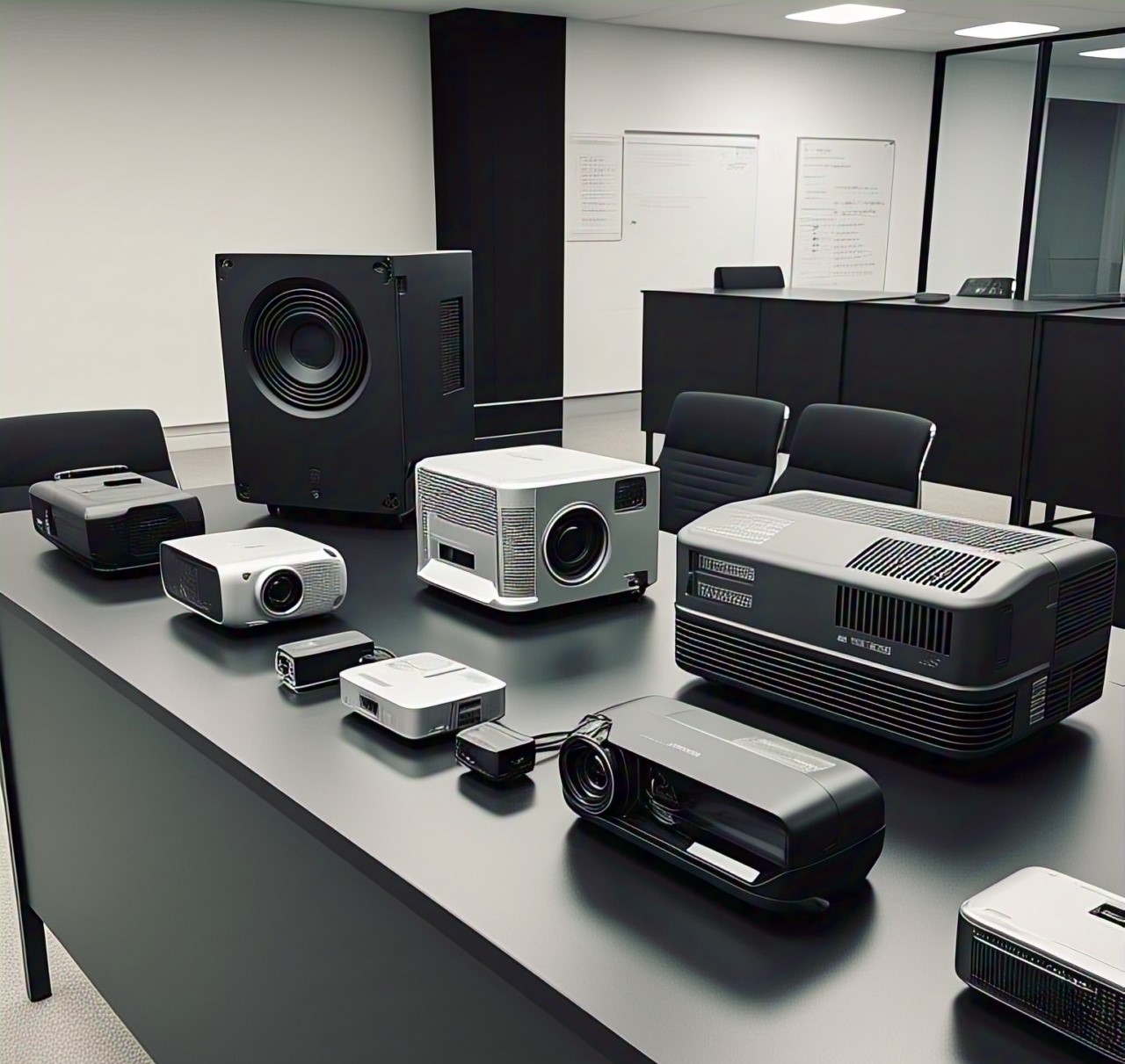
Choosing the right projector involves balancing image quality, portability, brightness, and your specific use case. Here’s a step-by-step guide to help you pick the perfect projector:
Determine Your Primary Use Case
Home Theater: Prioritize 4K resolution, HDR, and high contrast ratio.
Business/Education: Focus on brightness, portability, and easy connectivity.
Outdoor/Backyard: Opt for high brightness, weather resistance, and long lamp life.
Gaming: Low input lag, high refresh rates (120Hz+), and fast response times.
Portable/Compact: Small size, battery-powered, and wireless streaming.
Types of Projectors
Home Theater Projectors:
Pros: Cinematic image quality, support for HDR10/Dolby Vision.
Cons: Expensive, less portable.
Examples: Sony VPL-VW325ES, Epson Home Cinema 5050UB.
Business/Education Projectors:
Pros: High brightness (3,000–5,000 lumens), lightweight, HDMI/USB ports.
Cons: Lower color accuracy.
Examples: BenQ MH535FHD, ViewSonic PA503W.
Portable/Pico Projectors:
Pros: Pocket-sized, battery-powered, wireless casting.
Cons: Low brightness (200–500 lumens).
Examples: Anker Nebula Capsule III, XGIMI MoGo Pro.
Gaming Projectors:
Pros: 120Hz refresh rate, <20ms input lag, 4K support.
Examples: Optoma UHD38, BenQ X3000i.
Outdoor Projectors:
Pros: Weather-resistant, 5,000+ lumens, long throw distance.
Examples: Epson Pro EX9240, LG HU810PW.
Key Features to Consider
Brightness (Lumens):
Indoor/Dark Rooms: 1,000–2,500 lumens.
Ambient Light/Outdoor: 3,000–5,000+ lumens.
Resolution:
1080p (Full HD): Budget-friendly, great for movies.
4K UHD: Crisp detail for home theaters.
Native vs. Pixel-Shifted 4K: Pixel-shifting mimics 4K at lower cost.
Contrast Ratio:
Higher ratios (10,000:1+) for deeper blacks (crucial for movies).
Throw Distance:
Short Throw: Projects large images from 3–8 feet (ideal for small rooms).
Long Throw: 10–20 feet for large venues.
Lamp Life & Technology:
LED: 20,000–30,000 hours, lower brightness.
Laser: 20,000+ hours, vibrant colors, expensive.
Traditional Lamp: 3,000–5,000 hours, cheaper to replace.
Connectivity:
HDMI 2.1 (for gaming), USB-C, Wi-Fi/Bluetooth, and streaming sticks.
Sound Quality:
Built-in speakers vs. external sound systems.
Budget Considerations
Budget (100–300): Portable projectors (Anker Nebula, VANKYO).
Mid-Range (300–1,500): 1080p home theater (BenQ HT2050A) or business models.
Premium (1,500–5,000+): 4K laser projectors (Sony VPL-XW5000ES).
Top Brands
Home Theater: Epson, Sony, JVC, Optoma.
Business/Portable: BenQ, ViewSonic, LG.
Gaming: Optoma, BenQ, XGIMI.
Budget-Friendly: VANKYO, Apeman, WiMiUS.
Example Recommendations
Best Home Theater: Epson Home Cinema 5050UB (4K PRO-UHD, HDR10).
Gaming: Optoma UHD38 (4K, 240Hz, 16ms input lag).
Portable: XGIMI MoGo Pro (Android TV, 1080p, auto-focus).
Outdoor: LG HU810PW (4K laser, 2,700 lumens).
Final Tips
Test Ambient Light: Brighter rooms need higher lumens.
Screen vs. Wall: Invest in a screen for better image quality.
Check Keystone Correction: For angled projections.
Warranty: Look for 2–3 years of coverage.
By aligning your needs (movies, gaming, presentations) with the right specs, you’ll enjoy immersive visuals anywhere! 🎥✨
